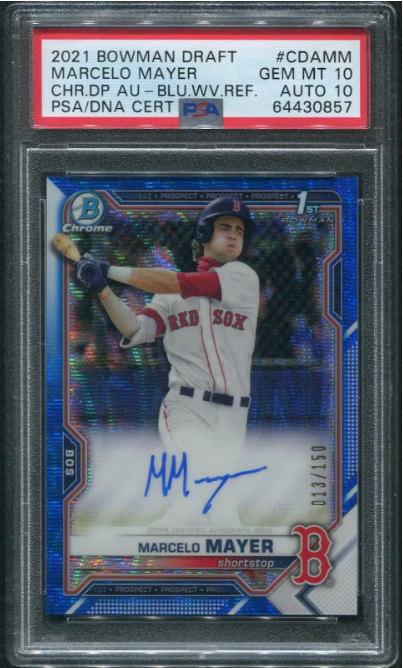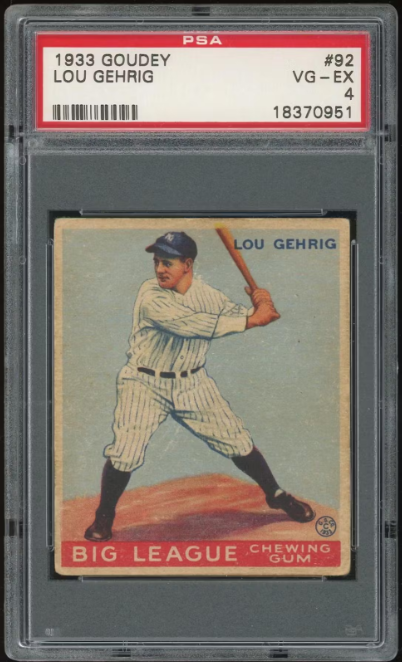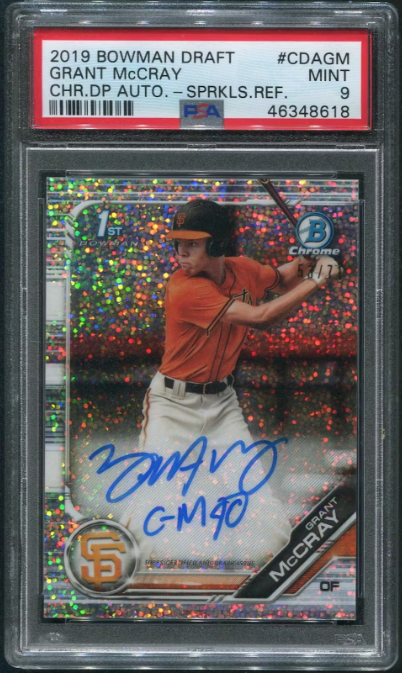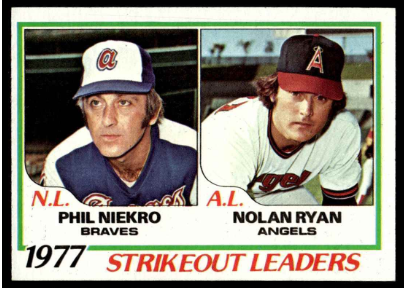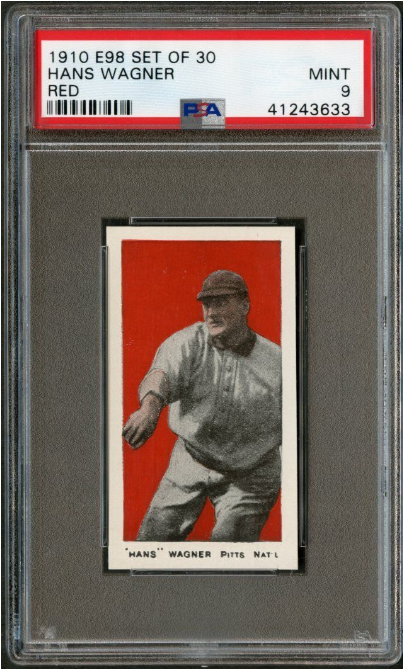There is a lot of money in baseball cards if you know what you are doing. But if it were easy, everyone would be raking it in hand over first. You can make a ton of money on stocks or the real estate market, too, but most people don’t. So be very careful when making moves in this market. It's volatile and can be incredibly unforgiving.
People will often tell you that a card is worth a specific amount. But that can be misleading. The cards only have that value if you can find the right market. The more expensive the card, the harder it is to find buyers willing to plunk the amount it is worth. Therefore, we can’t give one-size-fits-all all advice for all sports cards. Every transaction is a different story. But there are some helpful guidelines on how to sell your cards for a big profit.
Selling Sports Cards: Start With The Basics
We all want to make that big sale that will solve all of our problems. But before we start selling our collection, you have to start with the most simple task. Make a list of all the cards you own (or at least that you want to sell). Add them to your collection here on Cardbase or in your Cardbase App or put them in an Excel sheet so you can easily organize and cross-reference them by year and value. As you will see, there will be different strategies for cards from various eras and values.
All kinds of prices are available on lists like Beckett and the like. But honestly, those aren’t very useful. A card is only worth what someone is paying for it. Therefore, look for recent sales data on eBay, the PSA website, and any other source of accurate time numbers. If you go on eBay and look in “advanced” and then go to “sold listings,” you will see the latest sales for the card. Meanwhile, at PSA, you can check out the latest sales under “APR” (auction prices listed) for any card they have registered. Or you just look at the card details here on Cardbase, where we collect all this data for you for free.
Either way, ensure you have a good idea of what you have and can do with it. That gives you the baseline for what your card collection is worth now. But, of course, that is only half the battle. The following vital point is to ascertain what they will be worth in the future.
Sports Cards Value: Population Counts Are The Key
There are several factors involved in determining the value of a sports card. Some of them are subtle and unpredictable. For example, will the athlete on the card have a remarkable career? That has more to do with understanding sports than the card industry. It can also be hard to predict which cards will become the ones people recognize and are willing to pay top dollar.
But one element is pretty scientific and, therefore, easy to predict. Scarcity creates value, and abundance decreases it. Therefore, when the population count for a card is very low, the value of your card will go up. So buying vintage cards with few cards in a comparable grade, or very low-numbered cards of modern players, is an excellent way to make good money selling sports cards.
Pay Close Attention To The Eras
Selling and investing in old cards is very different from dealing with new ones. Generally speaking, older cards tend to increase in value over time. But usually, the gains are steady and unspectacular. Meanwhile, ultra-modern cards can lose most of their value overnight. But they can also gain market attractiveness equally quickly. Since each era is wildly different, we have some tips for selling cards from different periods for a substantial profit.
Selling Vintage Cards
With old-school cards, there usually isn’t much selection. Some players will only have one card per year. Therefore, what you have is base. But they still often have significant value because few have survived the years in good condition.
One of the best options for selling vintage cards is consigning them to a prestigious auction house. Because they are more solid investments, vintage cards (especially pre-war ones) are highly coveted by auction houses. The great thing about these establishments is that they have access to the kind of clientele you are looking for. Collectors with an understanding of history and deep pockets. They have networks of these collectors, and the ones who are good at their job promote the sales heavily. You can tell which establishments are the ones to deal with by the value of their recent sales. The numbers don’t lie.
Of course, the downside to these establishments is that they are relatively slow. The bigger the company, the more consignments they have to handle. Another thing to keep in mind is that auction houses have annual events where they sell specific collections. So, you may have to wait months until the auction house of your choice is able to sell your cards. But your patience will be worth it if you find the proper establishment for your needs.
Selling Newer Cards
While most of the valuable vintage cards are base, those overprinted cards are increasingly irrelevant to ultra-modern collectors. There are so many copies of base cards, and so many worthy of a PSA 10, that they are often not worth the grading fee. Instead, try to get your hands on undervalued autographed cards or low-numbered parallels. So many cards are coming out for promising young athletes that sometimes beautiful low-population items fly under the radar. That is where you can swoop in and make a profit.
With new cards, the values change all the time. Furthermore, the auction houses are not interested in them. Therefore, you can’t afford to have them sitting around. The key is to try and buy low but sell high. There are a few ways to do this:
The best way to handle buying newer cards is to purchase them in lots. Many sellers need to be more active and sell a bunch of cards in one listing. A lot is usually marked down 10-20% to get rid of inventory. That allows you to buy low. You can grade the raw cards later or sell them separately for a significant profit.
Grading Older Cards Versus New Cards
Sometimes, grading older cards is a good move. Most of the older raw cards you will find on eBay and elsewhere have clear flaws. After all, if someone found a flawless-looking Willie Mays rookie card, they would grade it or send it to an auction house rather than sell it raw to you. But the good news is that you don’t need a PSA 10 with vintage cards to make a profit, though it helps.
If you have a good eye, buying single cards raw to grade can be even more lucrative than buying lots. But this is a higher stakes game, which requires much knowledge in grading. Raw cards on sale for a reasonable price are not gem mint candidates. If they were, the owner would grade them. But once again, you are looking for the lazy listings. Any reasonably priced card of potential value that has a decent chance of getting a PSA 10 is worth considering. So take a good look at the card, especially the corners (that is where the damage usually is), and consider buying to grade. One home run can make up for several swing-and-miss attempts.
Here is our complete Guide to: Grading your Sports Cards
No matter what you are grading, you need to learn how the grading company (usually PSA or BGS) grades cards and what to look for. If you can predict more or less what grade a card will get, you can then use the tools we gave you to ascertain the likely value of the card after grading. Your profit from the card is the sale price minus grading fees and what you paid for the card. So make sure it's worth the effort.
Selling Sports Cards at Card Stores
You will most likely want to skip your local card store (LCS) when trying to sell your items. Generally, I am a huge supporter of your neighborhood store. But they generally are only sometimes interested in your specific cards. Therefore, you will find that they offer about half of what the card is worth on the open market. The main advantage your LCS holds is that they will pay you immediately. No other way of selling cards is that quick. You also don’t have to worry about shipping. If you are an exceptionally good in-person negotiator, you also might want to try your hand at this. But the odds are that none of these advantages are worth the hit you will take by selling at an LCS.
Selling Sports Cards at eBay
There is no forum for sports card sales that guarantees as many eyeballs on your cards as eBay. It has 135 million users worldwide, including almost every card collector. It also has some advantages of selling at an auction house since bidding is involved.
But a word of caution. The eBay sales format tends to reward sellers who deal in large volumes. The fees on selling are not crippling but bad enough for the site to be known across the hobby as “feeBay.”
So, how do you make money on selling sports cards online on eBay? The more experience you have, the better you get at selling. A good listing requires strong pictures, putting it up for auction at the right time, knowing how to title the listing, how to ship economically, etc. Furthermore, eBay tends to side with buyers in disputes, so sellers sometimes get screwed over.
For all these reasons, if you have a few choice items to sell, it might be better to avoid eBay. You could list badly or get scammed out of your profits. People sell on eBay mostly to get a quantity of inventory rather than quality cards out the door.
Bad Listings
Speaking of eBay, one of the best ways to make money off that format is by looking for poorly listed cards. As I said above, listing correctly on eBay is an art form. Only some people know how to do it properly. So, someone else's misfortune can be your bonanza. Look for items that are misspelled. Is someone selling a Jaden Hurts or Patrick McHomes rookie card? Fewer people see them, and you can get the listing for a steal.
Facebook Groups
There are some fabulous groups on Facebook for card sales. Some are general, and others are specialized for specific types. For example, there are good groups for selling Prizm cards and great ones for only pre-war vintage. This format has two significant advantages: a sense of community and a lack of fees. We are here to make money, so it's the latter we care about.
However, there are two disadvantages to this format. The number of eyeballs is limited in comparison to eBay. Most of these groups have limited membership. Meanwhile, Facebook transactions don’t have the safeguards eBay does. So it's easier to get scammed.
Volume Is The Key
People are always advertising get-rich-quick schemes. But these are invariably scams. Making real money requires hard work. Or having rich parents. But I can’t help you with that. No single transaction is likely to be life-changing. Instead, the accretion over time of good small deals will make you good money. So, if you follow the rules here over many transactions, you will earn top dollar. Some agreements won’t work out. Sometimes, you will lose money. But keeping to best practices over time increases your chances of profit distinctly.
Final Word On Selling Sports Cards For Top Dollar
The key to making money off sports cards is gaining experience. I have compiled a list of tips that others (including myself) have learned through the school of hard knocks. But there is no substitute for getting out there and doing it yourself. So make a list of your cards and start buying and selling. Use mistakes in listings, undervalued cards, lots, and grading to buy low. Then, find the right forum and advertise your listings well to sell high. With volume and experience, you will make a tidy regular sum on sports cards.
